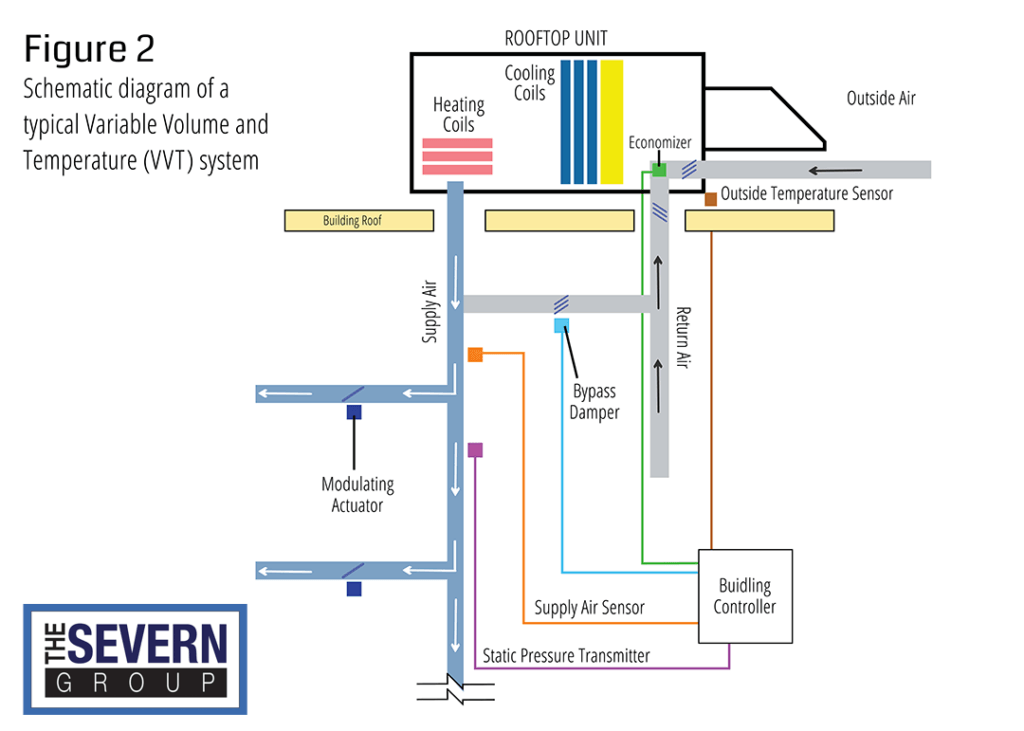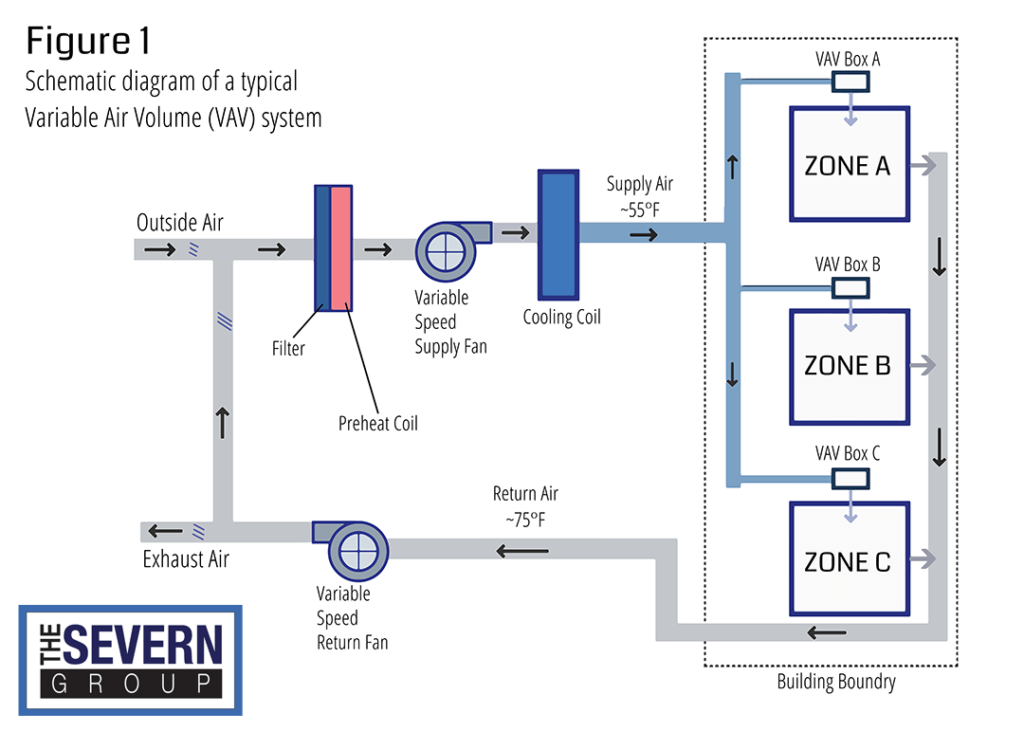VAV vs VVT HVAC Systems
Trying to decide which air zone HVAC system is right for you? There are two types to consider: VAV (variable air volume) and VVT (variable volume and temperature) HVAC systems. Overall, both systems help you cut back on utility costs compared to CAV (constant air volume) systems of years past. However, there are a few key differences that could sway your decision. To help you get a better idea, we’ve compared VAV vs VVT systems below.
VAV System
- VAV systems use variable frequency drives to control airflow. When terminals close, less air supply is needed, so the fan speed can reduce. Varying the airflow also helps maintain a constant amount of pressure.
- In a VAV system, supply air temperature is always the same. This means the system doesn’t have a cooling mode or a heating mode. Instead, most systems like this rely on return air to adjust heating and cooling as needed. Since there’s no downtime while switching between modes, the people within each zone get to enjoy steady comfort.
- Reheat boxes can be installed if more heat is needed for the winter months. But when available, perimeter heating can usually satisfy the extra need.
- VAV designs are often found in central plants with boilers, chillers, and piping. As a result, they tend to cost more to install upfront than VVT options.
- VAV systems tend to consume less energy than VVT systems. That’s because, with VVT, the fan is running regardless of whether the boxes are open all the way.
VVT System
 Controlling zone conditions depends on two things: airflow and temperature. While both systems vary airflow, VVT systems also vary in temperature.
Controlling zone conditions depends on two things: airflow and temperature. While both systems vary airflow, VVT systems also vary in temperature.- VVT systems enter either heating mode or cooling mode based on what the zone needs at the time. Ducts branch out to each zone, and every zone has its own terminal box. The terminal box controls the zone’s individual thermostat.
- Like VAV systems, VVTs use variable frequency drives. However, they also use bypass dampers to redirect extra air. In order to install a VAV, there has to be enough ceiling space in the building to fit the bypass duct.
- VVTs are most commonly seen as rooftop units. Therefore, they’re ideal for low-rise buildings with flat roofs. They also tend to be faster to install.
Deciding Between VAV vs VVT
At the end of the day, both systems have the same goal in mind. And, that is to provide individual zone control throughout an entire building. Zoning control is great because it gives building managers more freedom and flexibility. Not to mention, it also helps cut back on heating and cooling costs. So, which type is best for your retrofit or replacement project? Well, there’s no one-size-fits-all plan. At The Severn Group, we can assess your building’s need and help you figure out the perfect HVAC design. Contact us today to discuss your options and to learn more about VAV vs VVT systems.

